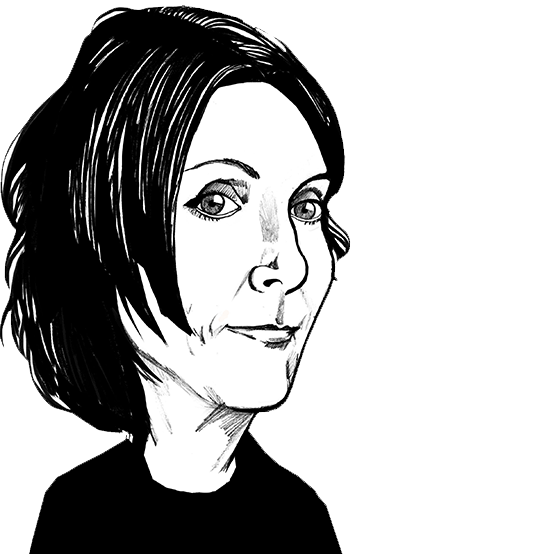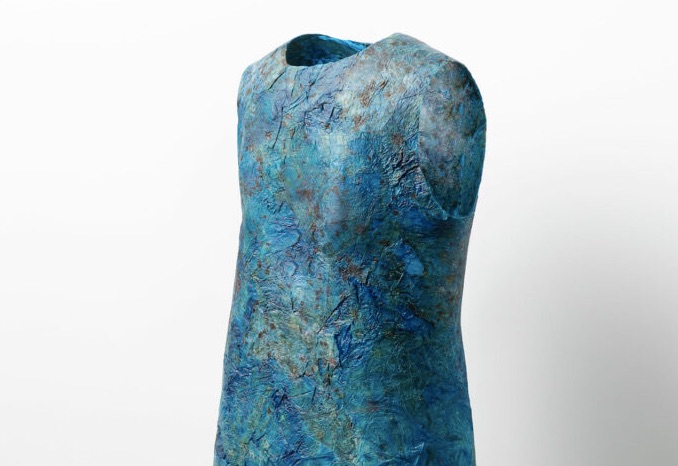
Calls for plastic warnings on UK clothing
Opinion


Over 250 expert speakers and more than 50 exhibitors came together virtually to showcase and debate technical process and material innovations and the shift towards a circular economy.

17th November 2020
Anne Prahl
|
Guilford, United Kingdom
The Plastic Free World Summit 2020 took place on the 9th and 10th of November and was presented in a live online and on-demand format. Covering five vertical industry tracks, over 250 expert speakers and more than 50 exhibitors came together virtually to showcase and debate technical process and material innovations and the shift towards a circular economy to address the rapidly growing problem of plastic pollution and its impact on the environment.
Consumers are becoming increasingly aware of the negative environmental impacts of fashion and are increasingly demanding plastic-free and lower environmental impact products. In response, the fashion and textile industry is finally committing to the search for solutions, which offer viable alternatives to materials made from non-renewable fossil fuels.
Forward-thinking textile mills, material innovators and researchers, biotech companies and scientists are driving the shift towards a new generation of materials and manufacturing processes and this article highlights some of the most promising plastic-free and bio-based material solutions presented at the summit, comprising both experimental and market-ready developments.
Experimental innovation
Algae based materials have attracted a lot of attention in recent years, with start-ups like Algiknit, Algalife and Bloom developing new types of materials for clothing, accessories and footwear.

New York designer and researcher Charlotte McCurdy’s approach is highly experimental and her work blends design and science to address existential threats such as climate change. In her interview with Amanda Johnson, consultant at UK based not-for-profit organisation The Sustainable Angle, McCurdy presented her conceptual carbon-negative raincoat, which was recently exhibited at The Cooper Hewitt Design Triennial in New York. The prototype’s material is made from carbon-sequestering marine macro-algae and the designer is keen to point out that she managed to produce a 100% mono-material, unlike other bio plastics, which can require blending with other, often synthetic, materials. The raincoat material is finished with a thin plant-based wax coating to provide waterproofing and all trims are made from plant-based cellulose.

Equally as innovative is Dutch designer Charlotte van Alem’s jellyfish leather, which was inspired by dead jellyfish in the Baltic Sea, as a consequence of the unprecedented jellyfish plague attributed to overfishing, increasing pollution and warming seas. The striking, conceptual material was created utilising ancient techniques for preserving parchment paper, involving washing, salting, tanning, layering and pressing or sewing the jellyfish pieces together into larger pieces.

Dutch design collective UNSEAM specialise in developing new technologies for local, digital and on-demand manufacturing of textile products to address the shifting landscape of mass-production. As part of the research project ‘3-D garment production with new biobased materials’, co-founder Bas Froon utilised jellyfish leather to experiment with the collective’s seamless, three-dimensional shaping textile technology and found that the material lends itself well to 3-D bonding and moulding, while remaining supple and flexible.
Bio-engineered material technologies
Lab-grown and engineered materials, such as Bolt Treads’ Microsilk fibres based on protein and Modern Meadow’s ZOA, which is grown from collagen and protein, are some of the new generation bio-engineered materials showing exciting potential for future fashion products. While there is much innovation going on in the labs, one of the most significant challenges is the upscaling of these material innovations.
As Oliver Syed from Japanese biotech company Spiber Inc. explained, the first generation of spider silk materials has been very difficult to upscale and produce at industrial scale volumes. The company have therefore developed Brewed Protein, which is manufactured through a fermentation process involving microorganisms in large-scale tanks using feed sugars and minerals to produce proteins, which are subsequently dried into a powder. This powder is processed into fibres, films and resins and the technology can be used to manufacture a wide range of fibres and textiles with distinctive properties including silky sheen, cashmere-like softness or the moisture-wicking and thermo-regulating performance of wool.

The company believes that Brewed Protein fibres have significant potential as drop-in replacements for environmentally harmful materials and are currently investigating the material’s lifecycle and environmental impact. Early analysis has shown that the material is renewable, biodegradable and provides a reduced carbon footprint during manufacture, while offering the opportunity for customisable functionality at competitive cost.
‘The Sweater’, launched in collaboration with Japanese ski brand Goldwin, is the third commercial product to use the technology and is made from a new blend of Brewed Protein functional wool. The sweater is produced as a limited-edition piece, which can only be bought by entering an online lottery system for a chance to win the opportunity to purchase it at $ 800.00.

Mark Herrema, CEO at Newlight Technologies, Inc., a biotech company based in Southern California, presented the company’s vision and journey around developing materials that can improve the environment. Following ten years of research, the company developed AirCarbon, a biomaterial described as regenerative, carbon-negative, ocean-degradable and high in strength, with the ultimate aim to solve plastics pollution and climate change. The production process involves the use of natural microorganisms found in the ocean to turn air and carbon from greenhouse gas into a material, using renewable energy and seawater. AirCarbon can be melted and moulded into fibres or sheets, to replace synthetic plastics and fibres and animal leather.
Recycled & regenerated materials
Innovations for plastic-free recycled and regenerated textiles have increased at rapid speed, as both established, and start-up companies have focussed on this area. Feedstock often comes from food industry by-products and agricultural waste and includes spoiled milk, orange, apple and grape skins or pineapple leaves, while converting textiles waste into valuable feedstock has been enabled through new recycling and regeneration technologies and processes.

Dr Luke Halverhals, Founder and CEO at biotech start-up Natural Fiber Welding spoke passionately about his company’s approach to creating low environmental impact bio leather. Halverhals is an outspoken critic of the use of non-renewable, synthetic materials in the fashion industry and dismisses the idea that the industry can recycle itself out of the plastic crisis. The company’s motto is ‘Plants not plastic’ and this approach inspired the development of Mirum leather, which is made from agricultural waste utilising their proprietary welding technology to mould and bond materials such as cork blended with coconut fibre. The strong material is both fully biodegradable and recyclable and the company are able to feed back production off-cuts and end-of-life products back into Mirum manufacture.

Patrik Lundström, CEO at Swedish textile-to-textile recycling company Renewcell presented the company’s innovative material Circulose, which aims to offer a more sustainable alternative to the fashion industry’s most popular materials, polyester and cotton. Unlike other types of regenerated fibres, which are made from wood, Circulose pulp utilises 100% textile waste, such as worn-out jeans and production cut-offs. Textile waste is mechanically shredded before the fibres are dissolved, dewatered, dried and formed into sheets. Circulose can be used to manufacture biodegradable, virgin quality viscose or lyocell textiles, either blended with other fibres or as a mono-material. In their current plant, the company are able to recycle textiles with 98% cotton content, as they can separate out 2% of other materials, such as elastane. This will be optimised to 90% cotton and 10% blend in their new plant.

Lotta Kopra, CCO at Finnish fibre producer Spinnova, presented the company’s unique manufacturing process, which differentiates from other man-made cellulosics and is therefore described by Spinnova as the ‘most sustainable material’ in the world. Wood from FSC or PEFC certified tree farms and waste materials, such as textiles and potato peel, are pulped and mechanically rather than chemically treated. This process uses zero harmful chemicals and has a very low water footprint, as no washes or rinses are required. The company are extremely proud of their groundbreaking technology, which was inspired by the way spiders weave their webs and aligns cellulose to create a strong elastic fibre to provide textiles that are 100% recyclable and ‘circularity-ready’.

Spinnova are currently collaborating with outdoor brand Bergans of Norway on the innovative ‘Collection of Tomorrow’ in order to pioneer commercial circular consumer products and services for the future. The collection comprises a backpack and a woven shirt and both styles are made with Spinnova’s 100% recyclable cellulose material although fabric composition and softness have been improved to make it suitable for apparel. The concept behind the collection is that consumers understand the value of the material embedded in the product and will therefore return it when it is worn-out or they no longer want to use it, so it can be recycled into a new material and product.

Business intelligence for the fibre, textiles and apparel industries: technologies, innovations, markets, investments, trade policy, sourcing, strategy...
Find out more